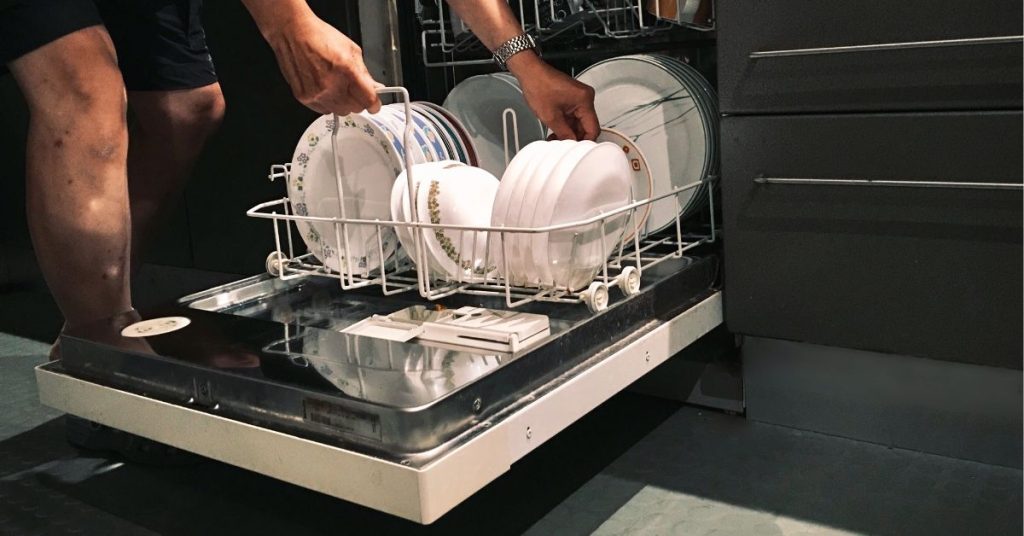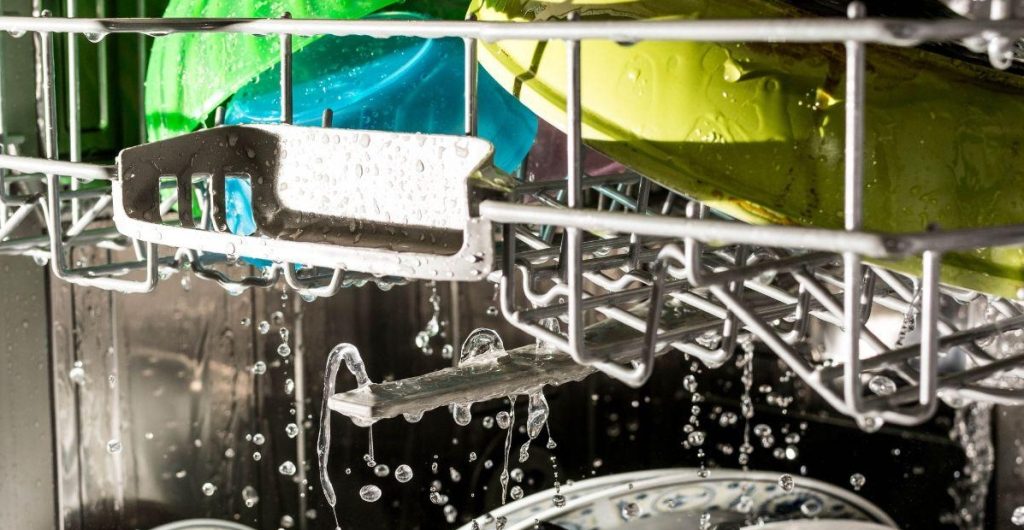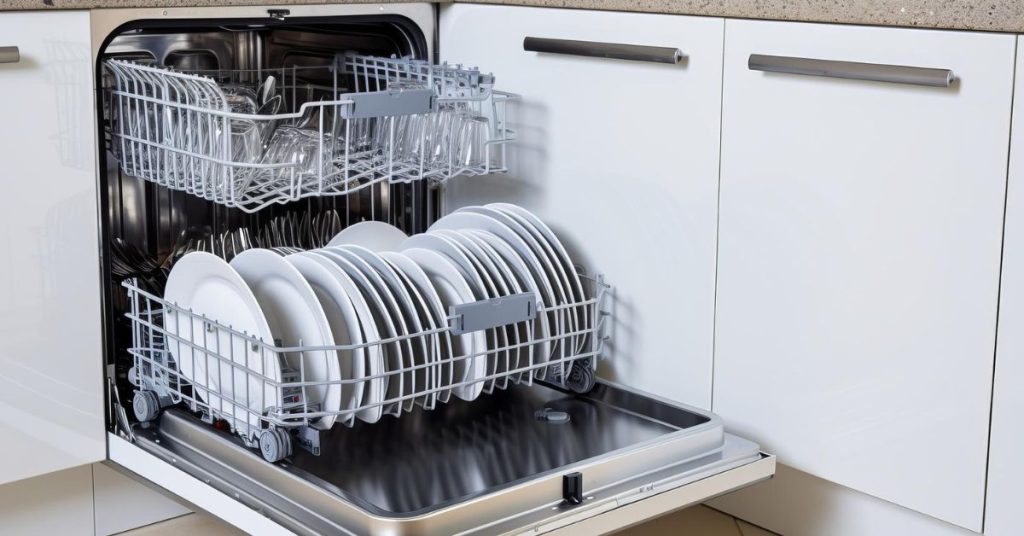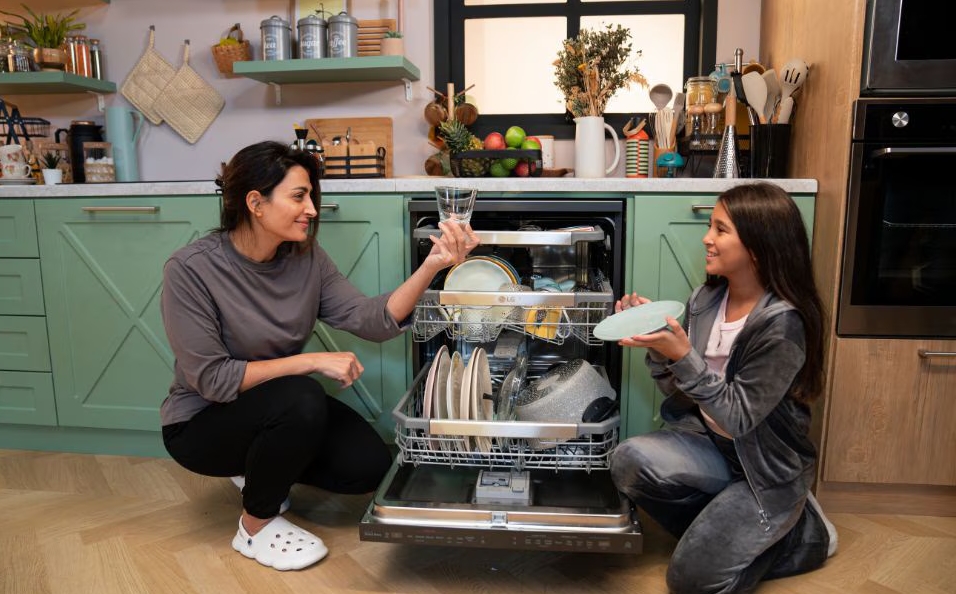Stainless steel is a staple in kitchens worldwide, prized for its durability and sleek appearance. But when it comes to cleaning, a common question arises: Can stainless steel go in the dishwasher? The answer isn’t as straightforward as you might think. Below, we dive into the details, drawing from experts and manufacturers to explore the nuances of dishwasher safety for stainless steel items—from cookware to cutlery—and expand into related care tips and considerations.
The Basics: Is Stainless Steel Dishwasher Safe?
“If you’ve ever wondered whether stainless steel can go in the dishwasher, you’re not alone. It’s a common question with a simple answer: yes! Stainless steel is one of the most durable and easy-to-care-for materials on the market, and it can withstand the rigors of the dishwasher without any problems. If you’re wondering whether stainless steel can go in the dishwasher, the answer is yes! Stainless steel is a durable material that can withstand high temperatures, so it’s perfectly safe to put in the dishwasher. In fact, washing your stainless steel cookware in the dishwasher can actually help to keep it clean and shining. Just be sure to use a mild detergent and avoid using harsh chemicals or abrasive scrubbers, which can damage the finish.” — Livings Cented (livingscented.com)
This optimism reflects stainless steel’s inherent strengths. Its corrosion resistance comes from a chromium oxide layer, which protects the metal from rust even in wet environments like a dishwasher. But as we’ll see, not all stainless steel items are created equal, and some caveats apply.
Understanding Stainless Steel’s Composition
“Stainless steel is an alloy formed from iron and at least 10% chromium, along with varying quantities of elements, among them nickel, manganese, carbon, and silicon. You’ve probably noticed the words ‘18/10’ stamped on high-quality stainless steel flatware. This signifies that its composition consists of 18% chromium and 10% nickel, along with other materials. Stainless steel resists corroding in damp environments—in other words, it won’t rust—because the alloy forms an inert surface film of chromium oxide that protects the metal beneath it from attack by the oxygen in water and air. Here’s a fascinating fact: This chromium oxide barrier self-heals when scratched or otherwise disturbed.” — Hunker (hunker.com)
This composition explains why stainless steel is generally dishwasher safe. The chromium oxide layer is key—it’s what makes your pots, pans, and utensils resilient. However, experts note that prolonged exposure to acidic foods or harsh detergents can challenge this protective film, especially if you don’t rinse items promptly.
Cookware: Stainless Steel Pots and Pans
“Stainless steel cookware can generally go in the dishwasher at anyone’s desired frequency,” Garcia says. Why? Because this metal features a protective chromium oxide layer that’s scratch- and rust-resistant. It can withstand the high temperatures, humidity and strong detergents of a dishwasher cycle. Most modern stainless steel pans are at least 304 (or 18/10) grade stainless steel; the main non-iron components are 18% chromium and 10% nickel.” — Family Handyman (familyhandyman.com)
That said, not everyone agrees it’s the best choice. “Doing the dishes is everyone’s least favorite chore—but here’s why it’s worth avoiding the dishwasher and washing your stainless steel pots and pans by hand. … Technically, yes—stainless steel cookware can go in the dishwasher. But just because it can doesn’t always mean it should. Certain types of stainless steel can become warped or corroded in the high-heat, high-pressure environment of the dishwasher, meaning you should hand wash. … Our Stainless Clad Cookware has held up beautifully being dishwashed in both home and professional kitchens without any corrosion. While our Stainless Clad can be dishwashed, we always prefer hand washing to prolong its lifespan and ensure it can keep turning out the stellar performance expected.” — Made In (madeincookware.com)[mfn]https://madeincookware.com/blogs/can-stainless-steel-cookware-go-in-the-dishwasher[/mfn]
The catch? Multi-layered or clad cookware, with aluminum or copper cores, might expose vulnerable metals at the rim. Dishwasher detergents can degrade these layers over time, risking performance issues like loss of induction compatibility or warping.
Cutlery and Utensils
“With flatware, there’s no question that you can toss it into the dishwasher without a second thought. Just rinse it off before putting it in the appliance to avoid prolonged contact with acids from food, in case you don’t run the load immediately. If your knife blades end up with rust spots, the problem isn’t with the dishwasher—it’s because blades are often made from a harder steel that retains a lasting edge but rusts more easily. They would have gotten rust spots from hand washing, too. The key is to dry them immediately.” — Hunker (hunker.com)
Experts caution, however, about mixing metals: “Never put stainless steel and silver-plated cutlery together in the dishwasher. In combination with the detergent, it will cause a reaction that will ruin both types of flatware.” — Hunker (hunker.com) Proper loading matters too—space out cutlery in the basket to avoid “nesting,” which can block water flow and leave items dirty.
Water Bottles and Tumblers
“Nowadays, it seems like everyone has a reusable water bottle in their bag, car or at their desk. They help us stay hydrated on the go while also avoiding disposable plastic bottles, which clutter up landfills. To ensure that your stainless steel water bottle is dishwasher safe, look for the dishwasher safe symbol or icon on the bottle. … Check to make sure your stainless steel drink bottle is definitely dishwasher-safe by reading the label. Some drink bottles that are painted or insulated might not be suitable. Place your stainless steel water bottle in the dishwasher upside down with its lid off. Place any detachable parts (like the lid, straw or filter) in the dishwasher, too.” — Finish Dishwashing (finishdishwashing.com)
For insulated bottles, hand washing is often safer: “Although it’s tempting to put travel mugs and other insulated containers and lids in the dishwasher, the water and heat could damage the seal and insulation.” — Whirlpool (whirlpool.com)
Potential Risks and Manufacturer Guidance
“While experts say it can, it’s important to proceed with caution, to keep pots shiny and knives sharp. … Forrest Webber, owner of Bear Brothers Cleaning and The Trade Table throws down a key caveat. Forrest says, ‘Despite being dishwasher safe, the high heat and harsh detergents may cause water stains, discoloration, and dullness on stainless steel cutlery.’ If you’re unsure what you cannot put in the dishwasher, the simplest way to determine it item by item is by checking the manufacturer’s guidance.” — Homes & Gardens (homesandgardens.com)[mfn]https://www.homesandgardens.com/kitchens/can-stainless-steel-go-in-the-dishwasher[/mfn]
Repeated dishwasher use might dull finishes or pit surfaces, especially with lower-grade stainless steel (e.g., 18/0, lacking nickel). Always check care instructions—some brands label items “dishwasher safe” but recommend hand washing for longevity.
Hand Washing as an Alternative
“We always suggest handwashing any pan that you use, regardless of brand or material of the pan,” Christy says. “This allows you to better preserve and extend the life of your cookware. When handwashing, you can use the appropriate technique to target harder to clean areas, such as burnt food or stubborn spots. Handwashing also prevents the use of any harsh cleaning detergents that could be harmful to the pan or to the coating.” — Family Handyman (familyhandyman.com)
For a gentle clean, “Try spraying your stainless steel with white vinegar if it has turned into a fingerprint magnet,” suggests Webber. — Homes & Gardens (homesandgardens.com) This method keeps items gleaming without risking dishwasher wear.
Broader Considerations: What Else Can’t Go In?
“Cast iron, enameled cast iron, non-stick, and most aluminum pots and pans should never be put in the dishwasher. The high water pressure, heat and detergent will remove the necessary oils from cast iron, damage or remove non-stick coatings, chip enamel, and cause discoloration on aluminum. Copper pots and mugs should also only be hand washed to avoid pitting and discoloration.” — Whirlpool (whirlpool.com)
Understanding these limits helps contextualize stainless steel’s relative resilience—and why it’s often the go-to for dishwasher-friendly kitchens.
Practical Tips for Dishwasher Use
“Even though stainless steel is one of the safest materials to put in the dishwasher, there’s a still a few tips to remember to avoid ruining your favourite cookware. Remember to remove any solid scraps from your dirty pots and pans beforehand to avoid any food particles from clogging your machine. Check your item for a ‘dishwasher safe’ label. … Consider how you stack your dishwasher. Dirty pots and pans should either go on their side, or mess-side-down on the bottom rack.” — Finish UK (finish.co.uk)
FAQ
Q: Can all stainless steel go in the dishwasher?
A: “Yes, stainless steel pans can generally go in the dishwasher. Most manufacturers label their stainless steel cookware as dishwasher safe. However, you should always check the care instructions that come with your specific set or brand.” — HomeGearGeek (homegeargeek.com)
Q: Will the dishwasher ruin my stainless steel pans?
A: “In general, putting stainless steel pans in the dishwasher won’t cause damage if they are marked as dishwasher safe. However, repeated cycles in the dishwasher can lead to scratches and dullness as a result of the high heat and strong detergents used in many commercial dishwasher soaps.” — HomeGearGeek (homegeargeek.com)
Q: Why do some stainless steel items rust after dishwashing?
A: “If your knife blades end up with rust spots, the problem isn’t with the dishwasher—it’s because blades are often made from a harder steel that retains a lasting edge but rusts more easily.” — Hunker (hunker.com)
Q: How do I clean stainless steel if I don’t use the dishwasher?
A: “When handwashing, you can use the appropriate technique to target harder to clean areas, such as burnt food or stubborn spots. … Soak it in hot, soapy water, and use a sponge to lift grease and grime. If you have burnt your food, you can sprinkle the surface with baking soda, add water and bring to a boil,” says Nicole Christy from All-Clad. — Family Handyman (familyhandyman.com)
Q: Can I put my stainless steel water bottle in the dishwasher?
A: “When it comes to stainless steel tumblers, it’s best to avoid putting them in the dishwasher. While they may be durable and resistant to rust, dishwashers can actually cause damage to the finish of your tumbler. Dishwashing detergent can be harsh on stainless steel, causing it to lose its shine or even develop spots.” — Livings Cented (livingscented.com) [Note: Check labels—unpainted, uninsulated bottles may be exceptions.]







